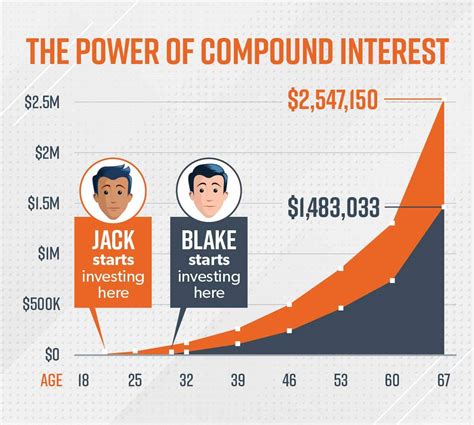Retirement: The Power of Compound Interest
Retirement planning can feel daunting, a distant mountain seemingly impossible to climb. But understanding the magic of compound interest can transform that daunting task into a manageable, even exciting, journey. Compound interest, often called the "eighth wonder of the world," is the engine that fuels long-term wealth accumulation and can be your secret weapon for a comfortable retirement. This article will explore how compound interest works, its importance in retirement planning, and how you can harness its power to secure your financial future.
What is Compound Interest?
Compound interest is the interest earned not only on your initial principal but also on the accumulated interest from previous periods. Think of it as interest earning interest. The more time your money has to grow, the more significant the effect of compounding becomes. It's the snowball effect in action – your initial investment is the small snowball that grows larger and larger as it rolls down the hill (time).
Example: Let's say you invest $10,000 with a 7% annual interest rate. In the first year, you earn $700 in interest ($10,000 x 0.07). In the second year, you earn interest not only on the original $10,000 but also on the $700 earned in the first year. This seemingly small difference compounds over time, leading to significantly higher returns.
Why is Compound Interest Important for Retirement?
Retirement planning requires a long-term perspective. The power of compound interest shines brightest over extended periods. The earlier you start investing, the more time your money has to grow exponentially, allowing you to reach your retirement goals with potentially smaller contributions. Delaying even a few years can significantly impact your final retirement nest egg.
How Long Does it Take to See the Benefits of Compound Interest?
While the effects are subtle initially, the longer your money is invested, the more significant the compounding effect becomes. It's not uncommon to see the true power of compounding emerge after 10-15 years, becoming truly remarkable after 20+ years. Patience and consistency are key.
How to Maximize Compound Interest for Retirement
Several strategies can help you maximize the benefits of compound interest for retirement:
Start Early: The Importance of Early Investment
The earlier you start investing, the more time compound interest has to work its magic. Even small, regular contributions made early in life can accumulate to a substantial sum by retirement. Don't underestimate the power of starting young.
Invest Consistently: Regular Contributions
Consistent contributions, however small, are crucial. Think of it as regularly adding to your snowball. Automated transfers from your checking account directly to your investment account can make consistent contributions effortless.
Choose the Right Investments: Understanding Risk and Return
Different investment vehicles offer varying levels of risk and potential returns. Diversifying your portfolio across different asset classes (stocks, bonds, real estate) is a sound strategy to mitigate risk and optimize growth. It’s crucial to match your investment strategy to your risk tolerance and retirement timeline.
Reinvest Your Earnings: The Snowball Effect
Reinvesting your earnings (dividends, interest) allows you to capitalize on the power of compounding. By reinvesting, you’re continuously adding to your principal, accelerating the growth process.
What are the Risks of Relying on Compound Interest?
While compound interest is a powerful tool, it’s important to acknowledge the inherent risks:
- Market Volatility: Stock markets can fluctuate, impacting the value of your investments.
- Inflation: Inflation erodes the purchasing power of your savings over time. Consider inflation-adjusted returns when planning.
- Unexpected Expenses: Life throws curveballs. Unexpected medical bills or job loss can disrupt your savings plan. Having an emergency fund is crucial.
What are Some Alternative Retirement Strategies?
While compound interest is a cornerstone of retirement planning, other strategies can complement it:
- Defined Contribution Plans (401k, 403b): Employer-sponsored retirement plans often offer matching contributions, boosting your savings.
- Individual Retirement Accounts (IRAs): Tax-advantaged accounts that offer various investment options.
- Annuities: Contracts that guarantee regular income payments during retirement.
Conclusion: Embracing the Power of Compound Interest for a Secure Retirement
Retirement planning isn't just about saving money; it's about harnessing the power of compound interest to build lasting wealth. By starting early, investing consistently, making informed investment choices, and understanding the associated risks, you can leverage this powerful force to achieve your retirement goals. Remember that professional financial advice can be invaluable in crafting a personalized retirement plan that aligns with your individual circumstances and risk tolerance. Don't delay – start building your retirement future today!

